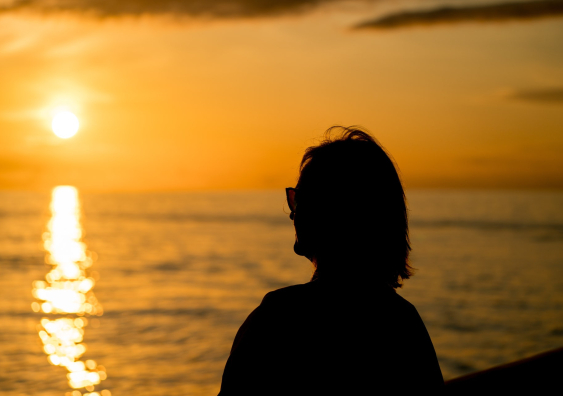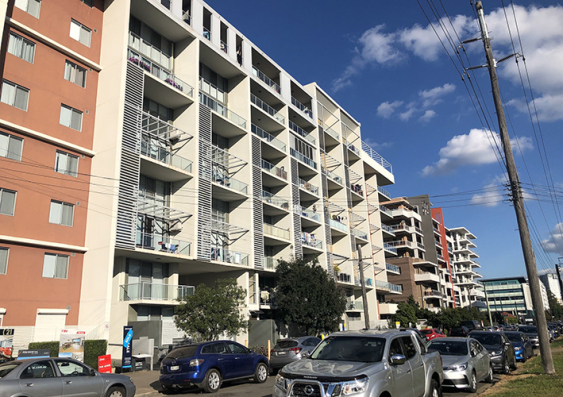Hot weather has been linked to an increase in suicidal thoughts and behaviours among young Australians, new research shows, prompting calls for an overhaul of public health approaches to higher temperatures.
The number of young people in NSW presenting to hospitals for suicidal thoughts and behaviours increases with the temperature, a new analysis of emergency department (ED) presentations shows.Â
Researchers studied more than 55,000 suicidality presentations made by young people, aged 12 to 24, at EDs during the warmer months of November to March, from 2012 to 2019.
The analysis, published in the , found ED visits by young people for suicidal thoughts or behaviours increased by 1.3% for every 1°C rise in daily mean temperature (DMT).Â
The increases occurred across a full range of temperatures and on single hot days, not only during heatwaves when factors like poor sleep were more likely to be an issue, said lead author Dr Cybele Dey, a psychiatrist and conjoint lecturer at UNSW Sydney.Â
“The impact on the very first day where the temperature is hotter than usual is just as bad as each subsequent day, and the effect starts at a more moderate temperature than expected,” said Dr Dey.
“This is not about concern about climate change affecting the mental health of young people, this is about hot weather itself affecting them.”
For example, on days with a 24-hour mean temperature of 21.9°C – the average DMT for the study period – there was an average of 45.7 youth suicidality presentations statewide. At that level presentations were already 4.7% higher than they would be at a cooler DMT of 18.3 °C, the state’s average for spring.
By a DMT of 25.2°C, the base for a heatwave, presentations were about 9% higher than at the spring DMT, and about 15 per cent higher by a DMT of 30°C, which is reflective of extreme heat. There were 94 heatwave days over the study period.Â
The researchers, from UNSW, Sydney Children’s Hospitals Network, NSW Ministry of Health, NSW Health, The University of Sydney and Queensland Children’s Hospital, controlled for long-term trends, holiday periods and school days when analysing the data.
Media enquiries
For enquiries about this story and interview requests, please contact Kate Burke, News & Content Coordinator, UNSW Medicine & Health.
°Ő±đ±ô:Ěý+61 2 9348 2538
·ˇłľ˛ąľ±±ô:Ěýkate.burke@unsw.edu.au
The link between heat and mental health
Their research extends previous studies showing increases in adult and overall mental health presentations to EDs as temperatures rise. It comes after found increased suicide risk among older Australian men during high heat anomalies and found a link between higher temperatures and mental health presentations at Westmead Hospital, particularly for women. This is the first study to examine presentations among youth in NSW. Â
While the increase may sound small, it is cause for concern, especially as temperatures continue to warm, experts say. Youth suicidality and suicide have been on the rise in Australia in recent decades, and suicide is already the leading cause of death for youth aged 15 to 24.
Dr Dey said the linear increase in presentations suggested there may be a biological mechanism at play when young people get too hot. Â
“There was an increase in presentations on the first moderate hot day, which tells us it is more likely to be a biological effect, rather than a flow-on effect from factors like poor sleep.
“The heat itself looks to be doing something to increase people’s distress and that is supported by other literature. We know that calls to mental health crisis lines go up with temperature and there are overseas studies showing a link between heat exposure and suicidality presentations, but also increased temperatures and death from suicide.”Â
Researchers say further investigation is needed on the link between heat and youth suicidality, to confirm if higher temperatures are causing the increase, as they suspect, or are simply coinciding with it.
“That said, the evidence for the effect heat has on child and adolescent mental health is significantly stronger than that for social media, which we are already seeing quite a lot of action on,” Dr Dey said.Â
Dr Dey added previous research showed an increase in negative sentiment on social media and decrease in positive posts on hotter days. Â
Senior author Dr Iain Perkes, a psychiatrist and senior lecturer with UNSW’s School of Clinical Medicine, was sceptical when they set out on the study, suspecting any link might be driven by climate change anxiety. But the increases on singular hot days, and at milder temperatures, soon changed his mind. Â
“It’s quite staggering,” he said of the findings. “While we haven't established causality here, the type of pattern ... would point to a cause-and-effect response.”
How the heat effect varies across the stateÂ
A further breakdown of the data, by five climate zones across the state, showed the heat effect was strongest in Western Sydney, inland rural and regional NSW, and weaker in Sydney's inner suburbs and regions like Wollongong, the Central Coast and Newcastle. Even at similar temperatures, the effect was greater in outer regions.Â
Dr Perkes said socio-economic disadvantage, which is associated with poorer quality housing and lower air conditioning ownership and usage, made it more challenging for people in areas like Western Sydney to cope with higher temperatures. More limited access to green spaces and waterways were also likely contributing factors.Â
“Independent access to green space, nighttime cooling with sea breezes and your quality of housing, are all important factors in determining how people can cope with heat,” Dr Perkes said. Â
“We’ll need to do more research on these possible mediating factors, but that shouldn’t stop us from getting on and making sensible changes that we know work more broadly to reduce exposure to higher temperatures.
"If you're finding that effect across different social settings, across different nations, and across different climate zones, then it is likely that it’s that direct connection between heat and mental distress.”
Changes needed to better protect youthÂ
Improving housing quality and access to cool environments for youth, both at home and school, would help better protect them from the effects of higher temperatures. Â
A shift in public health measures and messaging was also needed, to extend health approaches beyond their current focus on heatwaves, physical health, and limited age groups, the researchers said.Â
“Public health messaging about heat is usually limited to heatwaves and focused on the very young and elderly,” Dr Dey said. “But we need to be doing more to warn and protect the entire population, about the impact on both their physical and mental health.”Â
A , designed by the University of Sydney’s Heat and Health Research Incubator team, and partners, was a good start, Dr Dey said. It enabled people to calculate their individual heat health risk by inputting personalised information.Â
Targeted interventions for at-risk groups in specific areas would also be key, but more research would be needed before this could occur. Â
Dr Dey concluded: “With temperatures on the rise it is critical that we do further work to better protect youth, and all people, from heat related health risks.”
Further information and resources to support the mental health of children and adolescents, and tips for being heat aware, can be found on the .
If this story has raised issues for you, or someone you know needs support, please contact:
Lifeline: 13 11 14 or
Kids Helpline: 1800 55 1800 or
Parent Line NSW 1300 130 052 or
In an emergency call triple zero – 000.
Related stories
-

Extreme weather is landing more Australians in hospital – and heat is the biggest culprit
-

Heat, cold, pollution, noise and insects: too many apartment blocks aren’t up to the challenge
-

'Nature prescriptions' can improve physical and mental health: study
-

Climate change threatens the rights of children. The UN just outlined states' obligations to protect them




